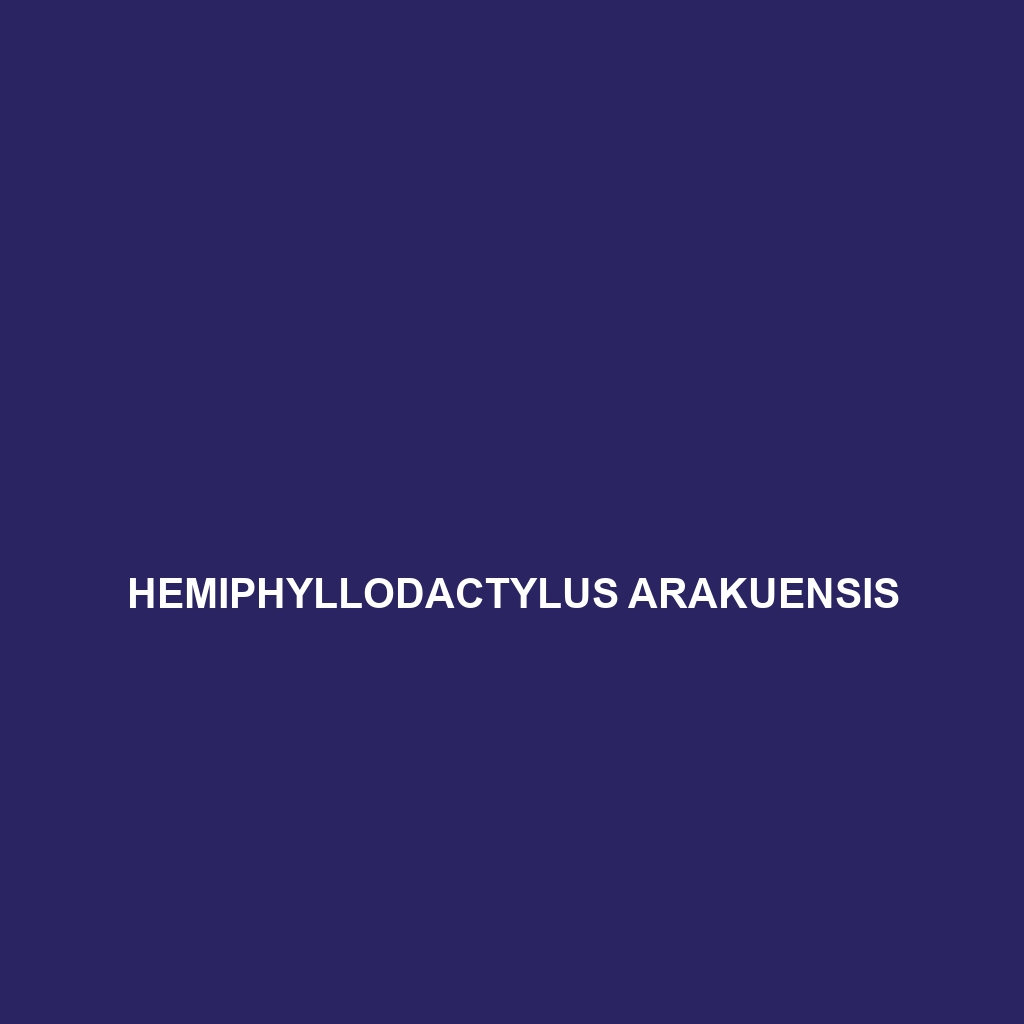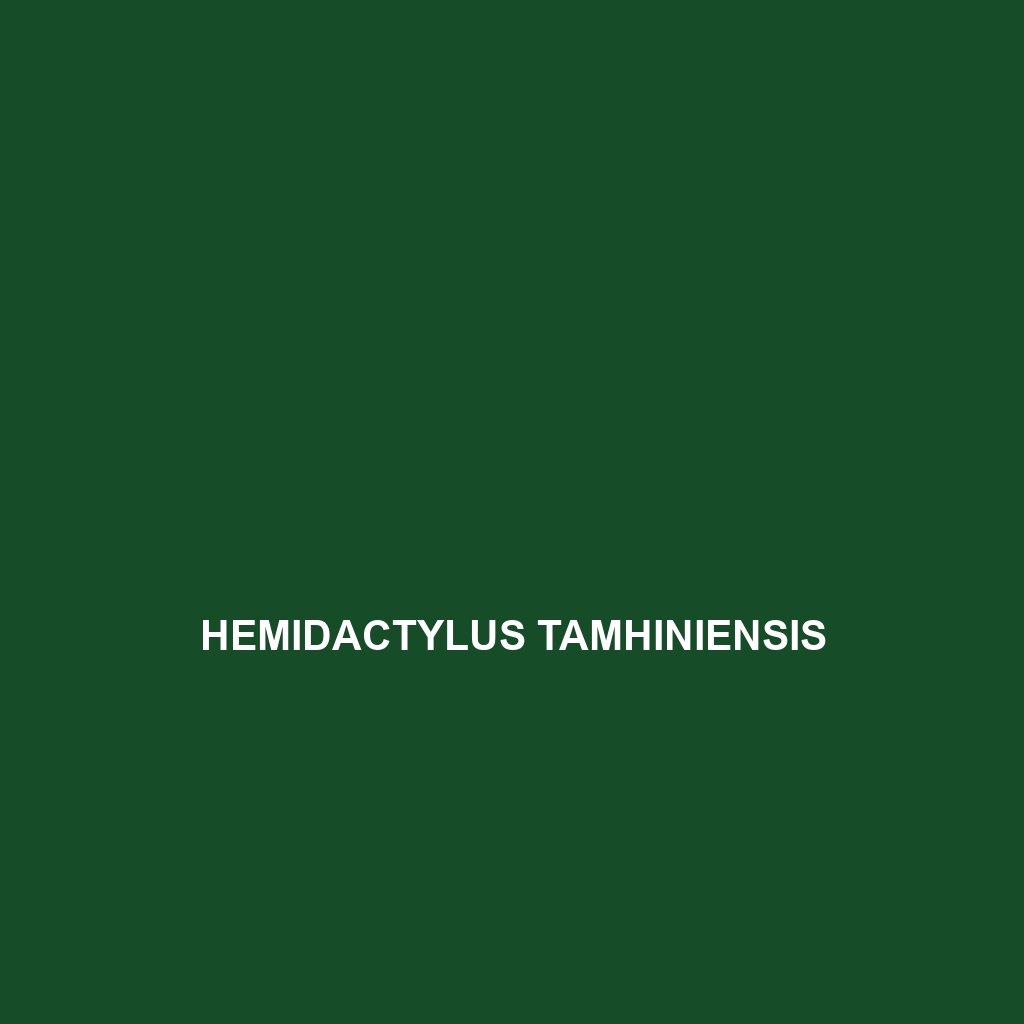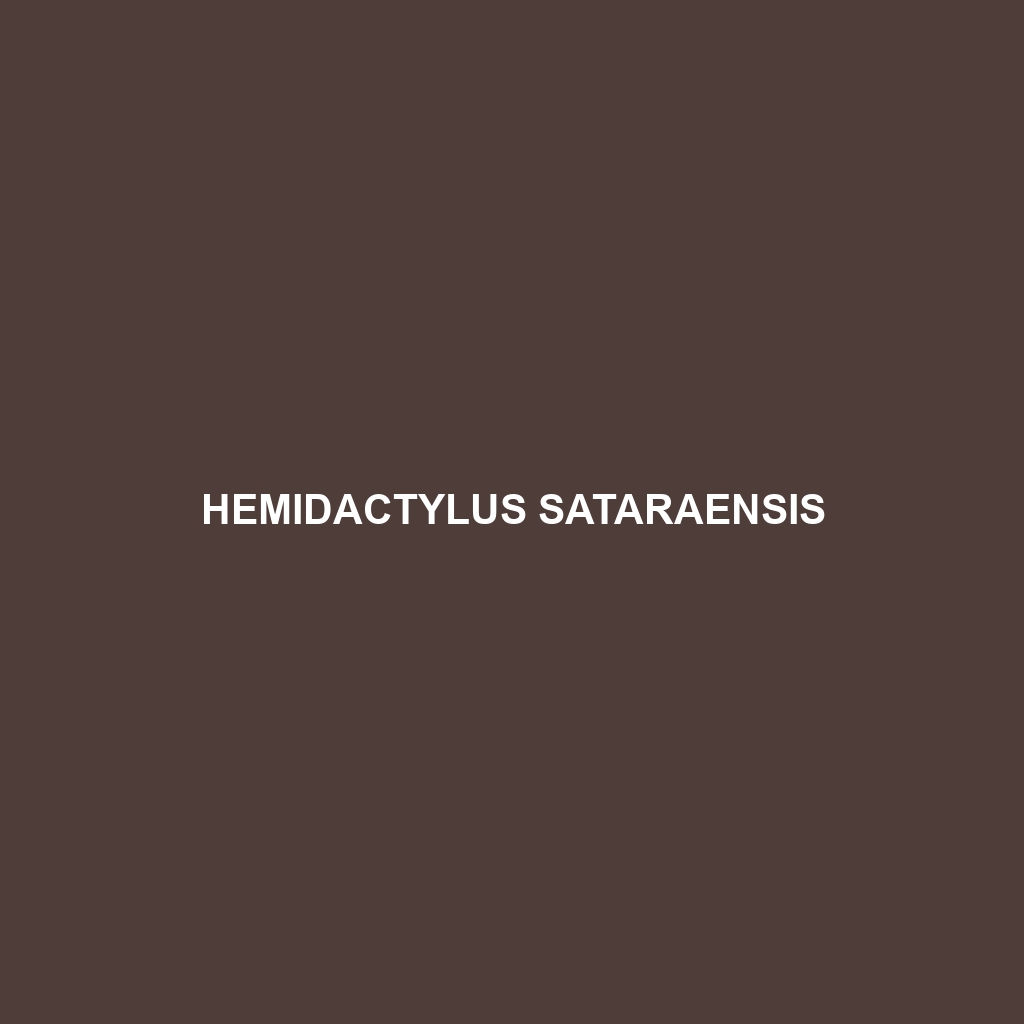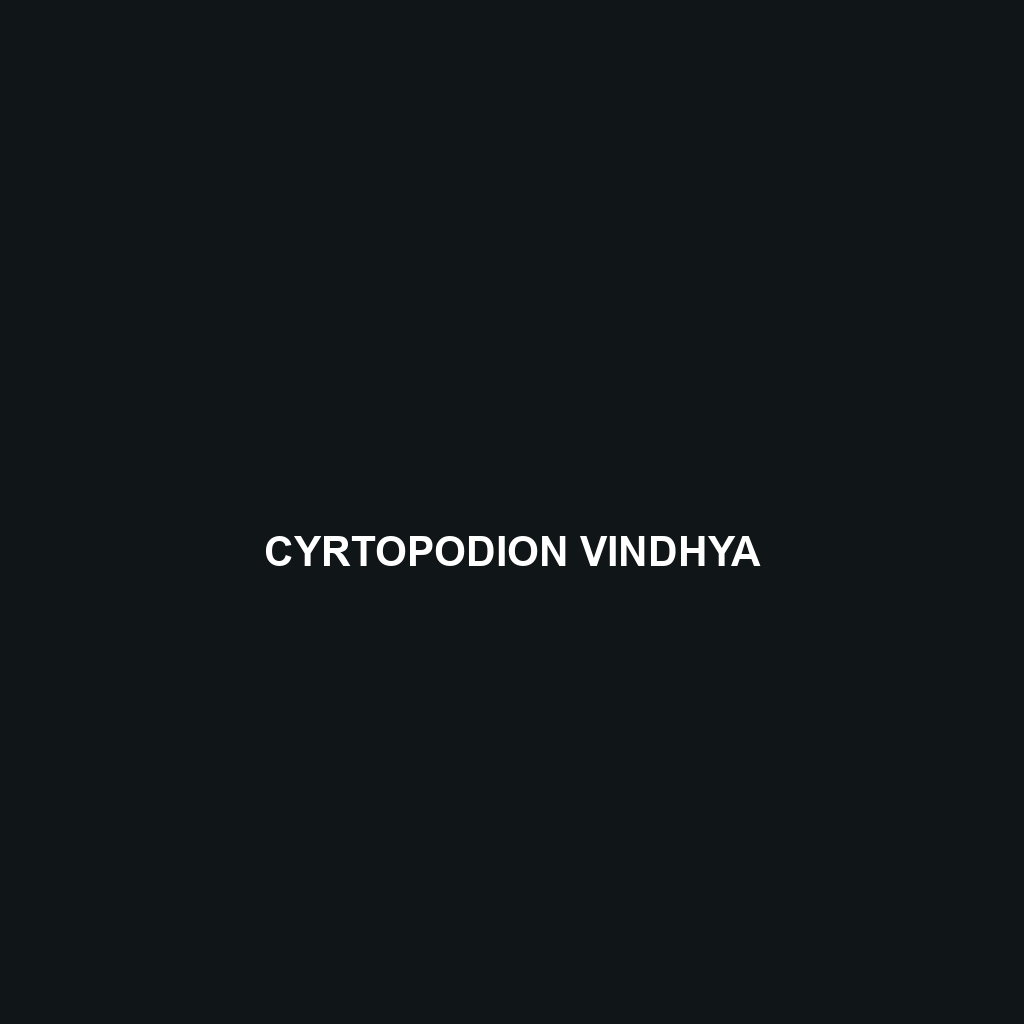<p><b>Hemiphyllodactylus arakuensis</b> is a unique insectivorous lizard native to the tropical rainforests of the Eastern Ghats in India, characterized by its slender body, specialized climbing toe pads, and nocturnal foraging behavior. This species plays a vital role in controlling insect populations while facing threats from habitat loss and climate change, leading to its vulnerable conservation status.</p>
Tag: biodiversity in India
Hemidactylus tamhiniensis
Discover the Hemidactylus tamhiniensis, also known as the Tamhini gecko, a nocturnal reptile native to the rich ecosystems of the Tamhini Ghats in India. Measuring 7 to 10 cm, this insectivorous gecko features a slender body with rough, mottled skin for excellent camouflage, playing a vital role in controlling pest populations within its habitat.
Hemidactylus sataraensis
<p><b>Hemidactylus sataraensis</b>, known as the Satara House Gecko, is a nocturnal insectivorous species native to the humid Western Ghats of India, typically measuring 7 to 10 centimeters in length with distinctive grey to light brown coloration and dark spots. They thrive in various habitats, are adept climbers, and play a crucial role in regulating insect populations while serving as prey for larger predators.</p>
Hemidactylus pakkamalaiensis
<p><b>Pakkamalai Gecko (Hemidactylus pakkamalaiensis)</b>, a medium-sized and nocturnal gecko native to the tropical forests of South India’s Western Ghats, features a slender body with camouflaged patterns and adhesive toe pads for climbing. This insectivorous species plays a vital role in its ecosystem by controlling insect populations and serving as prey for larger animals.</p>
Hebius khasiensis
Discover the stunning Hebius khasiensis, a slender, nocturnal snake native to the lush rainforests of Meghalaya, India. Known for its distinctive dark brown or olive green coloration and its role as a vital insectivore in the ecosystem, this vulnerable species thrives in rich, humid environments while helping to maintain ecological balance.
Eublepharis hardwickii
Discover the captivating Eublepharis hardwickii, or Hardwicke’s gecko, a nocturnal insectivore native to the dry forests of the Indian subcontinent. With its distinctive yellow to brown patterned skin and remarkable camouflage capabilities, this gecko thrives in arid climates, showcasing its adaptability and vital role in its ecosystem.
Eryx johnii
The Eryx johnii, or Indian Sand Boa, is a robust, nocturnal snake native to the dry regions of the Indian subcontinent, known for its distinctive brown or yellowish coloration with darker blotches, and its ability to camouflage in sandy environments. This obligate carnivore primarily feeds on small rodents and lizards, exhibiting fascinating burrowing behavior and viviparous reproduction, contributing significantly to the ecological balance of its habitat.
Dravidogecko douglasadamsi
The Dravidogecko douglasadamsi, also known as Douglas Adams' gecko, is a medium-sized, nocturnal gecko native to the rainforests of southern India, featuring vibrant coloration for effective camouflage and a diet primarily consisting of insects. Classified as Vulnerable, this species plays a crucial role in regulating insect populations and maintaining ecosystem balance.
Cyrtopodion vindhya
<strong>Cyrtopodion vindhya</strong>, also known as the Vindhya Gecko, is a small to medium-sized lizard found in the rocky, arid regions of India's Vindhya Range. This nocturnal species exhibits distinctive camouflage with light brown to gray coloration, thrives on a diet of insects, and plays a vital role in its ecosystem as both predator and prey.
Cyrtopodion aravallensis
Cyrtopodion aravallensis, also known as the Aravalli Gecko, is a nocturnal lizard native to the arid regions of the Aravalli Range in India, measuring 6 to 10 cm long with sandy brown and grey coloration for effective camouflage. This insectivorous species plays a critical role in controlling insect populations and is currently classified as vulnerable due to habitat loss.









